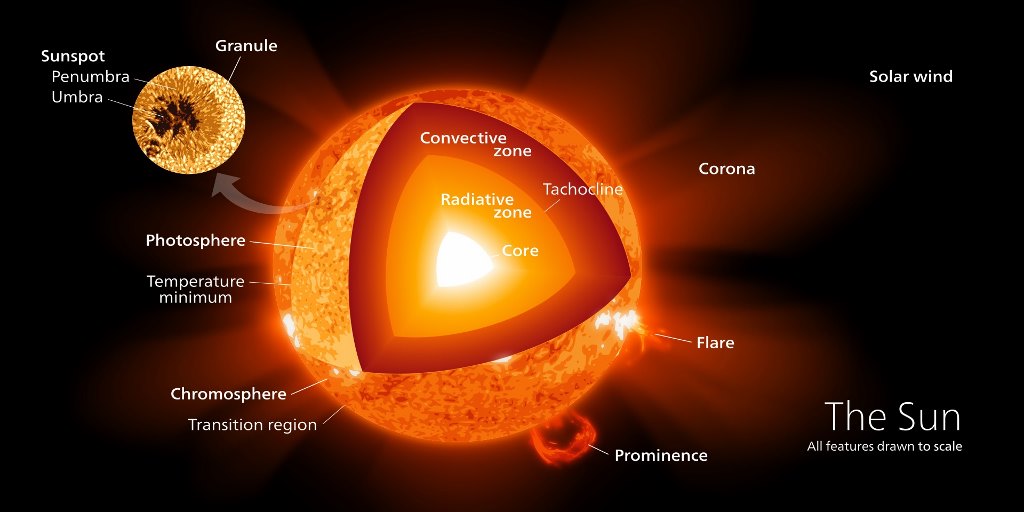The Sun is our nearest star, which isn’t saying much because it’s still 93 million miles (152 million km) away. And filling that distance is… nothing! It’s just the cold, empty vacuum of space. Admittedly, the Sun is pretty big: about 1,300,000 times the size of the Earth. Effectively, then, the Sun is a huge ball of burning, light-emitting gas (well, plasma really…). But it’s so far away that even the light takes more than eight minutes to get here. So, given all that, how can the Sun possibly cause cancer in us, here on Earth?
And that’s really my question: how can the Sun cause cancer?
Because there’s absolutely no doubt that it can and does. Frankly, the Sun causes a lot of cancer. Skin Cancer makes up 40% of all the cancers in the World. And 90% of skin cancers are caused by the Sun. This means that 36% of the total cancer cases in the World, right now, are directly attributable to the Sun. More than a third…!
Those are some pretty impressive figures.
But how? How does it do this?
In a previous post, I wrote about how cellular (mobile) phones are unable to cause cancer, because they operate using non-ionising radiation. Meanwhile, the only form of radiation that can cause cancer, is ionising radiation. So, if the only thing coming from the Sun is light, how can it possibly cause cancer?
Well, to be fair, there’s more than just light…
The Sun is so hot that it rips atoms into nuclei and electrons, which then flow around each other in the aforementioned plasma. The protons of the nuclei, mean that those parts of the plasma are positively charged. The electrons, on the other hand, are negatively charged. And, because the Sun is spinning, this creates currents within the plasma, not unlike the wind and ocean systems on Earth.
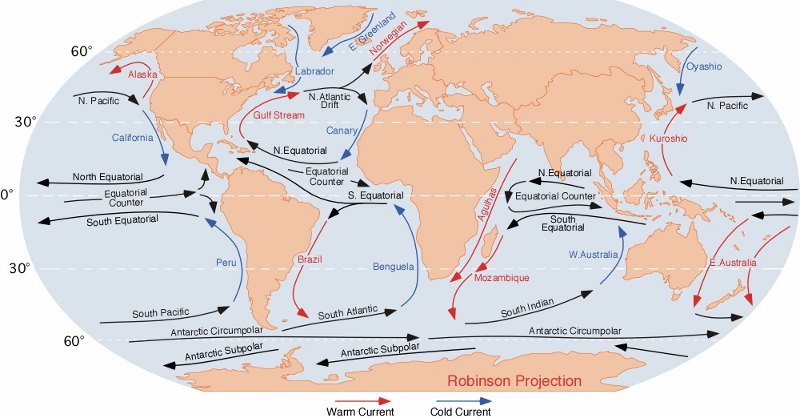
By Dr. Michael Pidwirny ( http://www.physicalgeography.net)
As you can imagine, all these electrically charged particles moving around each other generates electricity. It gives the Sun an electrical field. And, where you have electricity, you have magnetism, because they are the two parts of the electromagnetic force.
Electricity creates magnetic fields, and magnetic fields create electricity. This means that the Sun has a dynamic feedback loop, resulting in the Solar Dynamo. It’s this dynamo process that keeps the Sun’s magnetic and electrical fields constant. It’s what keeps the light on, in the sky.
All this activity results in a low level constant ejection of plasma, known as the Solar Wind. Sometimes, the twists and kinks in the magnetic field can result in a Solar Flare. And, if this process gets really bad, you end up with a Coronal Mass Ejection. And if one of those hits the Earth, you’ll know all about it…!
But only because the media stations will scream blue murder.
In reality, we’re all perfectly safe from the huge amounts of plasma and radiation that a Solar Flare or Coronal Mass Ejection can generate. Even if one hits the Earth head on. Well, unless you’re in Space… There may also be power outages, if enough magnetism hits the electrical grid to overload it. Oh, and there’s a good chance that some of the satellites would get taken out, meaning disruption to communication networks. But no physical danger.
The reason for this is that the Earth’s atmosphere absorbs this excess radiation before it reaches the surface. And the Earth’s magnetic field simply diverts all the dangerous stuff around the planet, again, preventing it hitting the surface. Although there would be some spectacular Aurora displays up toward the poles.
So, again, if the Earth protects us from the worst the Sun can throw at us, how can mere, sunlight cause cancer?
Well, that’s because there’s more to sunlight than just the colours of the rainbow. Sunlight includes Infrared (IR) light and Ultraviolet (UV) light.
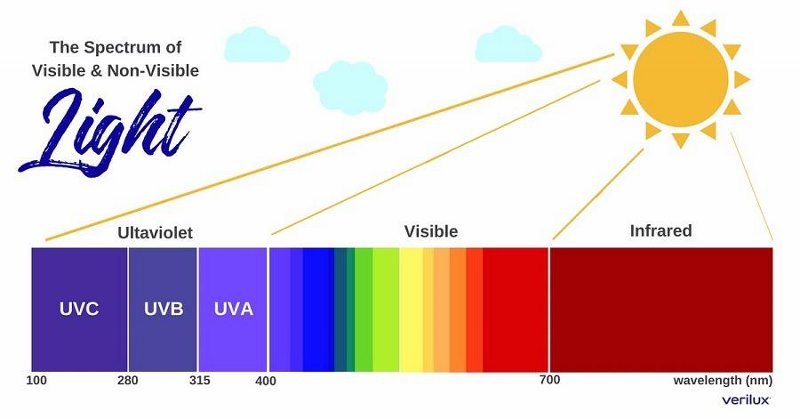
And even with IR and UV added in, sunlight only makes up a tiny part of a much bigger spectrum. The electromagnetic spectrum, to be precise.
When I wrote about mobile phones and cell towers, I said they did not pose a cancer risk because they operate in the non-ionising part of the electromagnetic spectrum. So, let’s take a look to see where sunlight falls:
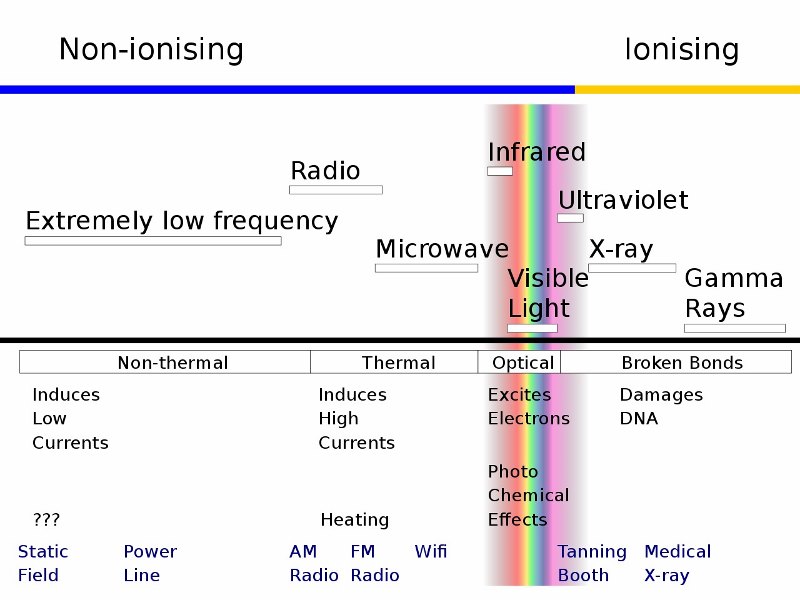
Right then, Infrared and Visible Light are both safely in the non-ionising range. But look at Ultraviolet…
There’s an overlap between the UV frequencies and the ionising frequencies. This means that some part of UV light, some part of sunlight, is actually ionising radiation.
And that is how the Sun can cause cancer.
Not in extraordinary events like Solar Storms. Just in plain, simple sunlight…
Of the three categories of UV light, UVA is the most common and least dangerous, while UVC is the least common and most dangerous. UVB, as you’d expect, is somewhere in between.
UVC is so energetic that most of it is absorbed by the Ozone Layer. Sadly, though, the Ozone layer has been depleted by the chemicals that we’ve put into the air. Things like CFCs, in particular. As such, the Ozone layer does not provide as much protection as it used to, in the areas close to the poles. So, it’s no coincidence that:
White people in Australia, New Zealand and South Africa have the highest rates of melanoma in the world.
https://en.wikipedia.org/wiki/Skin_cancer
This does not mean that the Sun can only cause cancer in fair skinned people, far from it:
Though naturally dark people have a much lower risk of skin cancer than fair-toned people, this does not make them immune to skin cancer. Darker skinned men and women should still take action to protect their skin and eyes from overexposure to the sun as they can still develop malignancies and suffer all forms of UV damage. In addition, cases of skin cancer in people with darker skin are often not detected until later stages, when it is more dangerous.
https://health.ucsd.edu/news/features/pages/2016-09-06-listicle-10-skin-cancer-myths.aspx
We all need to be careful in the Sun!
But while most of us are relatively safe from UVC, the same is not true of UVA and UVB. The American Cancer Society page on Ultraviolet (UV) Radiation explains the roles of UVA and UVB as follows:
- UVA rays have the least energy among UV rays. These rays can cause skin cells to age and can cause some indirect damage to cells’ DNA. UVA rays are mainly linked to long-term skin damage such as wrinkles, but they are also thought to play a role in some skin cancers.
- UVB rays have slightly more energy than UVA rays. They can damage the DNA in skin cells directly, and are the main rays that cause sunburns. They are also thought to cause most skin cancers.
In essence then, it’s the UV radiation from the Sun that can cause the cancer. One of the difficulties with this is that you can’t see UV radiation, so how can you know when it’s there in dangerous levels?
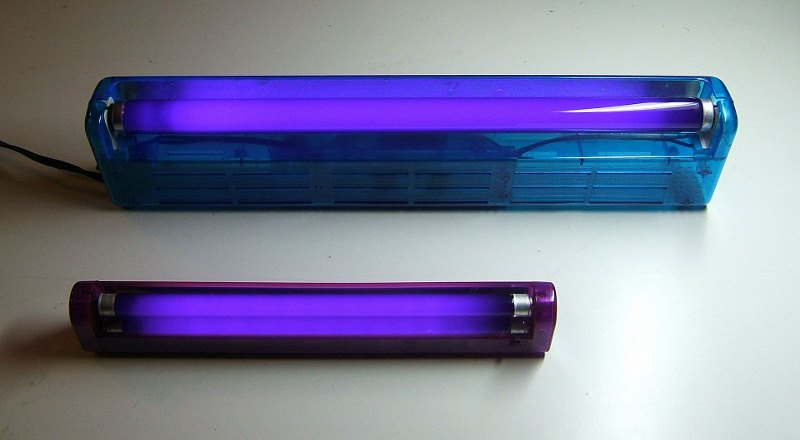
By Chetvorno – Own work, CC0, https://commons.wikimedia.org/w/index.php?curid=17169501
Because, while UV is always a part of sunlight, it isn’t always hazardous. How dangerous the UV component is, depends on:
- Time of day: UV rays are strongest between 10 am and 4 pm.
- Season of the year: UV rays are stronger during spring and summer months. This is less of a factor near the equator.
- Distance from the equator (latitude): UV exposure goes down as you get farther from the equator.
- Altitude: More UV rays reach the ground at higher elevations.
- Clouds: The effect of clouds can vary, but what’s important to know is that UV rays can get through to the ground, even on a cloudy day.
- Reflection off surfaces: UV rays can bounce off surfaces like water, sand, snow, pavement, or even grass, leading to an increase in UV exposure.
- Contents of the air: Ozone in the upper atmosphere, for example, filters out some UV radiation. (source)
And, if your skin is pale enough, you certainly know after you’ve been exposed to too much UV, because of the sunburn. Sunburn is your skin’s way of telling you that you’ve taken a dangerous dose of UV radiation. Reports vary, but you should work on the assumption that only a very few cases of sunburn start to increase your chances of getting skin cancer.
But there are ways to help prevent the Sun from doing its damage. For a start, you can be aware of the items in the list, above, and respond to them accordingly. Other than that, you can do things like:
- Limit the time you spend in the Sun
- Make sure you’re wearing the appropriate level of sunscreen
- Reapply said sunscreen at the recommended rate, and after swimming (if recommended)
- Wear a hat to protect your head and face
- Wear a shirt
- Basically: be sensible, because the Sun will cause you cancer, if you let it…
The only good thing about all this, is that skin cancer has a relatively good survival rate.
Melanoma skin cancer is the most dangerous type and, in the UK, it has an 87% survival rate. While in the US, the non-melanoma cancer types only account for 0.1% of total cancer related deaths.
All of which confirms that the Sun can cause cancer, and these cancers can lead to death.
Which still leaves the unanswered question of, how the Sun can cause the cancer in the first place.
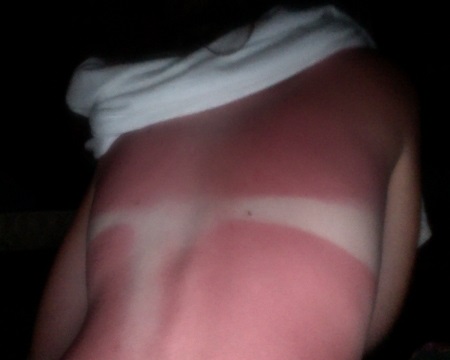
By FAL101 at English Wikipedia – Own work CC0, https://commons.wikimedia.org/w/index.php?curid=66156761
The answer is in the strength of the UV radiation…
While UV light can be ionising radiation, it is only just ionising radiation. This means that the ionising effect of UV can’t penetrate far into your body. In fact, this ionising effect is almost inevitably collected in the skin. So it is in the skin that the cell DNA is damaged by the UV radiation. And it is in the skin that the cancer forms. For further details on the technical aspects of how all this happens, see the Biomedical article, Sunlight and Skin Cancer.
UV light from the Sun is only just strong enough to cause cancer in human skin. And, because there are a lot of humans and a lot of sunlight, there is a lot of cancer. But, because the UV radiation involved is barely into the ionising spectrum, the cancers it causes are very treatable.
Providing you don’t leave them too long…
The main takeaway from all this, though, is not that the Sun can cause cancer, because we all knew that. It’s that so many of these cancers are avoidable. It the UK, for example, Cancer Research UK reports that 86% of melanoma skin cancers are considered as being avoidable.
So, if we all know that the Sun can cause cancer, let’s stop letting it!
